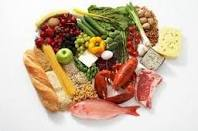Vitamins regulate a variety of essential bodily functions. They are crucial in many of our metabolic processes so that we can benefit from the energy in our foods. Vitamins are also very important in helping to build our bones, teeth, skin, blood and many other vital body tissues.
Vitamins are classified as either water soluble or fat soluble based on how they are absorbed and used by the body.
This week we focus on the fat soluble vitamins. Join us in two weeks to learn more about water soluble vitamins.
Fat Soluble (Vitamins A, D, E and K): Fat soluble vitamins are those that are normally stored in the body.
When these vitamins are ingested, they dissolve in fat. In a person with a healthy digestive system, the body uses what it needs at that time and stores the rest for future use.
In this blog, we explain the why we need each fat soluble vitamin and which foods are good sources of them.
|
Name |
Why do we need it? |
Where do we find it? |
|
Vitamin A |
It is important in helping with the moisturisation of our skin and mucous membranes (lining of the nose, eyes, throat). Vitamin A also helps with night vision. It is an antioxidant, which means that it protects against the effects of “free radicals” (unstable compounds that can damage healthy body cells). Vitamin A also increases our immunity. |
It is stored in our liver, so the liver of other animals is a rich source of vitamin A. The animal source is known as retinol, and is also found in eggs, oily fish (e.g. mackerel), butter and milk. The main plant source of vitamin A is known as beta-carotene and is found in orange/red fruit and vegetables (e.g. carrot, sweet potato, red pepper).
|
|
Vitamin D |
Regulates and improves the uptake of calcium and phosphate in our bodies for healthy bones and teeth. Important for pregnant and breastfeeding mothers to assist with the child’s bone development because babies can’t produce the vitamin D in their skin. |
Sunlight (we make vitamin D in our skin), oily fish, liver, fortified products (e.g. breakfast cereal, margarine), eggs, baby milk formula.
|
|
Vitamin E |
It helps to maintain our reproductive system, nerves and muscles. Similar to vitamin A, vitamin E is also an antioxidant. |
Nuts, seeds, plant oils (e.g. olive oil, corn oil), wheatgerm, some green leafy vegetables |
|
Vitamin K |
Important for helping our blood to clot properly (healing wounds) and in the formation of our bones and kidney tissues. |
Green leafy vegetables (e.g. broccoli, spinach), vegetable oils, cereals. Small amounts in pork and cheese. |



